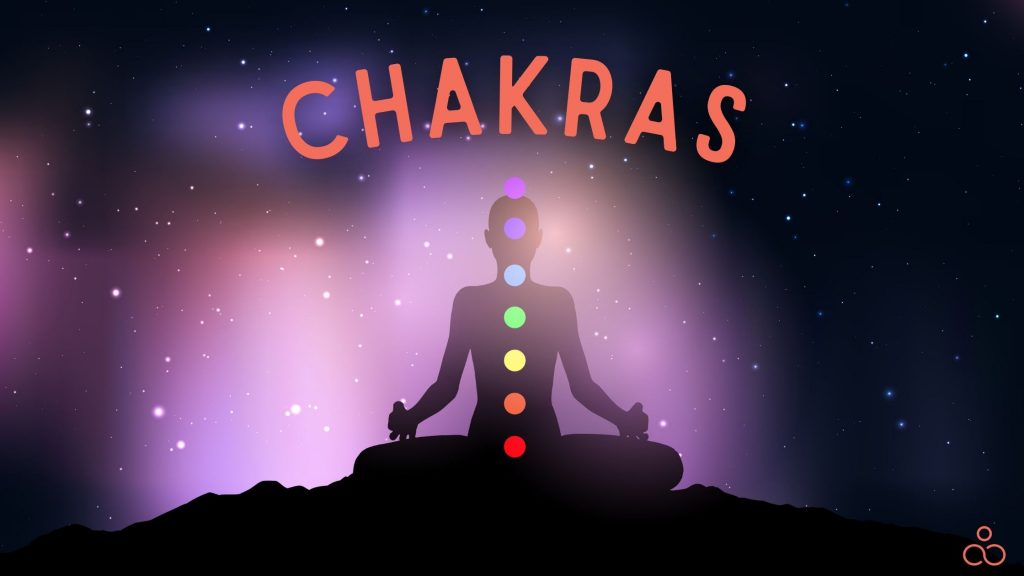If you have ever attended Yoga classes, practiced meditation with the help of a teacher, or visited a reiki practitioner, you must have heard of the word Chakras. While some people might know what Chakras are, the details might still be missing. In this article, you will absorb a lot of information about Chakras and why they are so important.
What are Chakras?
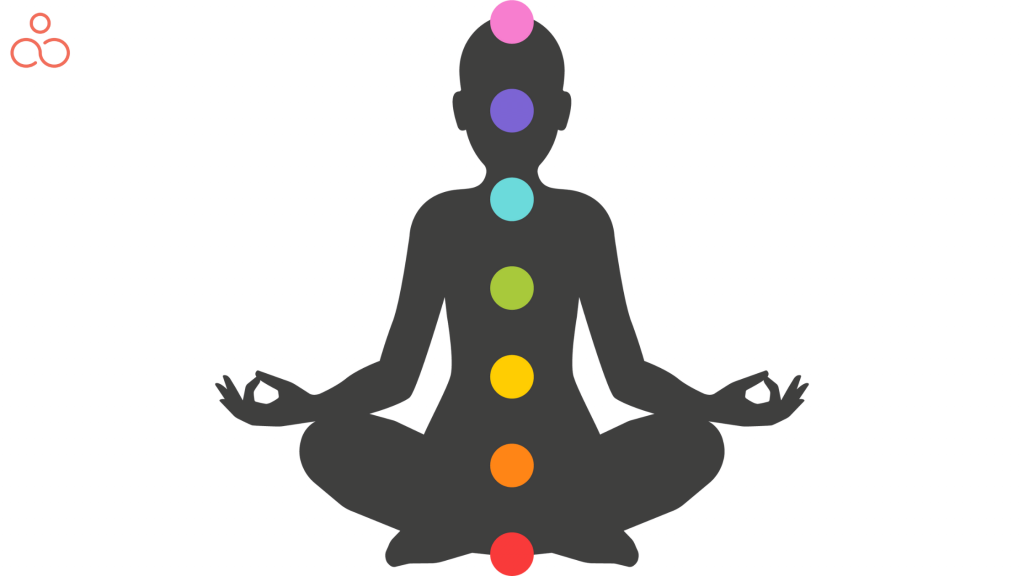
In Sanskrit, “Chakra” refers to a wheel, and hence the energy disks in our body are called Chakras. These free-flowing energy points are important to maintain the balance in the body at all levels, physical, mental, emotional, and spiritual. They regulate the body’s systems, strengthen the spinal cord, and improve bodily functions when maintained in the proper alignment. Therefore, it is essential to take utmost care towards maintaining the balance and unblocking the Chakras.
Here is the list of the seven Chakras that run along the spine, starting from the base of the spine to the crown of the head. Though some people firmly believe that there are 114 Chakras in the human body, these are the seven Chakras often referred to as the core.
- Root Chakra or Muladhara Chakra
- Sacral Chakra or Swadhisthana Chakra
- Solar Plexus Chakra or Manipura Chakra
- Heart Chakra or Anahata Chakra
- Throat Chakra or Vishuddhi Chakra
- Third Eye Chakra or Ajna Chakra
- Crown Chakra or Sahasrara Chakra
In the following sections, let’s discuss in detail the Chakras, colors associated with each Chakra, their meanings, position, impact, and more.
Chakras, Dimensions, and Colors
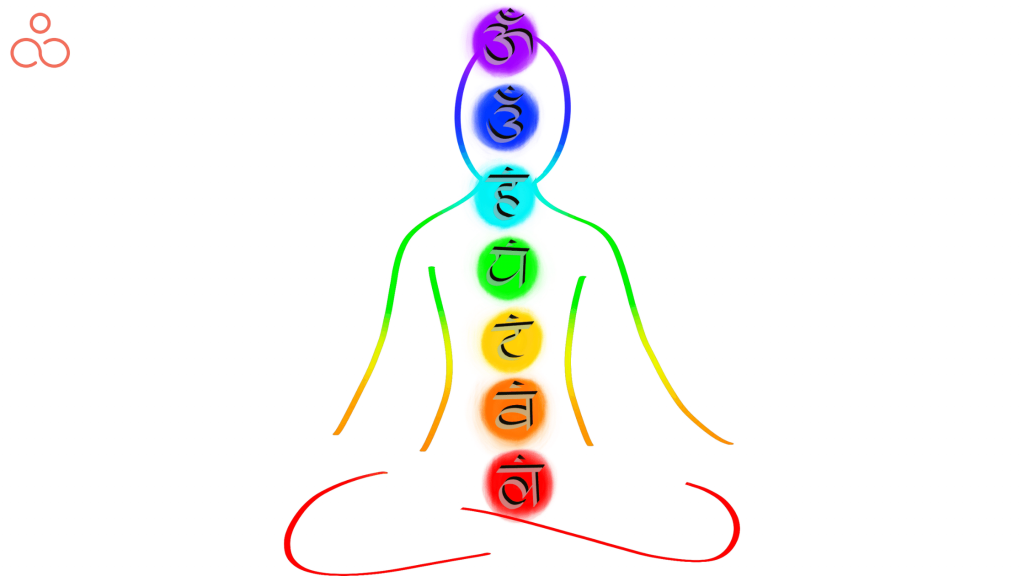
Root Chakra or Muladhara Chakra
In Sanskrit, “Mula” refers to the root and “adhara” refers to the foundation. This is located at the base of your spinal cord. It is primarily responsible for bringing a stable and secure feeling in life. It helps establish the fundamental foundations of life. You might experience isolation, anxiety, loneliness, depression, or lack of self-esteem when this Chakra is blocked. The root Chakra associates itself with red as it symbolizes security and passion. Since the root connects you with the environment around you, opt for root vegetables and red-colored food sources like tomatoes, strawberries, etc. It promotes passion, survival instincts, energy, and strength. The gonad glands connect to this Chakra.
Sacral Chakra or Swadhisthana Chakra
In Sanskrit, “swa” refers to self, and “adhisthana” refers to being established. This Chakra is located a few inches below the belly button. It helps you handle your emotions and to communicate feelings better. It is responsible for the sexual energy and creative quotient. You might experience extreme fatigue, sexual dysfunction, unhappiness, or difficulty in relationships when this Chakra is blocked. The Sacral Chakra associates itself with the color orange. Include foods such as pumpkins, papaya, oranges, and honey to unblock this Chakra. The female reproductive organs, lymphatic system, pelvis, large intestine, and bladder are connected to this Chakra.
Solar Plexus Chakra or Manipura Chakra
In Sanskrit, “Manipura” refers to the city of gems, and while referring to Manipura Chakra, we are referring to the natural element of fire. You might experience weakness, digestive disorders, pain in the stomach, or anxiety when this Chakra is blocked. This Chakra is in the stomach area and is associated with yellow color. Yellow represents power and energy. Hence it is recommended to include corn, bananas, pineapple, apricots, etc. It helps you gain control over yourself and eventually in life. It is responsible for self-confidence and self-esteem. The adrenal glands are connected to this Chakra.
Heart Chakra or Anahata Chakra
In Sanskrit, “Anahata” refers to being unhurt or unbeaten. This Chakra is located near the heart, and you might experience a sense of emptiness, feeling lost, trust issues, jealousy, or difficulty letting go of emotions when this Chakra is blocked. It associates itself with the green color, and hence it is good to include greens, broccoli, lentils, sprouts, etc., in your diet. It helps you develop compassion towards others and is responsible for love. The thymus and lymph connect to this Chakra.
Throat Chakra or Vishuddha Chakra
In Sanskrit, “vishuddha” refers to pure or flawless. This Chakra is in and around the throat. It is responsible for better verbal communication. You might experience sore throat, thyroid problems, shyness to communicate, or other listening abilities when this Chakra is blocked. It associates itself with the blue color, and it is recommended to add blueberries, blackberries, and dragon fruit to your food. It helps you communicate truth creatively and maintain a healthy balance in life. The ears, teeth, jaws, neck, and throat relate to this Chakra.
Third Eye Chakra or Ajna Chakra
In Sanskrit, “ajna” means perceive. It is located between the eyebrows on the forehead and is referred to as the Third Eye Chakra. It helps you to have a strong gut. It is responsible for the intuition and imagination you carry. You might experience blurred vision, headaches, dizziness, difficulty making decisions, or confusion when this Chakra is blocked. This Chakra associates itself with the color indigo, and it is recommended to include foods such as eggplants, purple lettuce, plums, and grapes in your food. It helps open a new reality in life by imagining many possibilities. This Chakra connects to the pineal or pituitary glands in the body.
Crown Chakra or Sahasrara Chakra
In Sanskrit, “Sahasrara” refers to thousand-petalled. It is located at the top of your head, on the crown. This one helps you figure out subtleties like where you come from, your purpose in life, and where you go. It is responsible for your spiritual connection with yourself, others, and the universe. You might experience disconnection with the supreme power, develop a material obsession, and develop headaches when this Chakra is blocked. This Chakra associates itself with purple color, and interestingly experts recommend NO food here. Instead, drink lots of fluids or even fast and help your body cleanse itself at the cellular level. The pituitary gland, brain, head, and central nervous system of the body are connected to this Chakra.
Techniques to Unblock Your Chakras
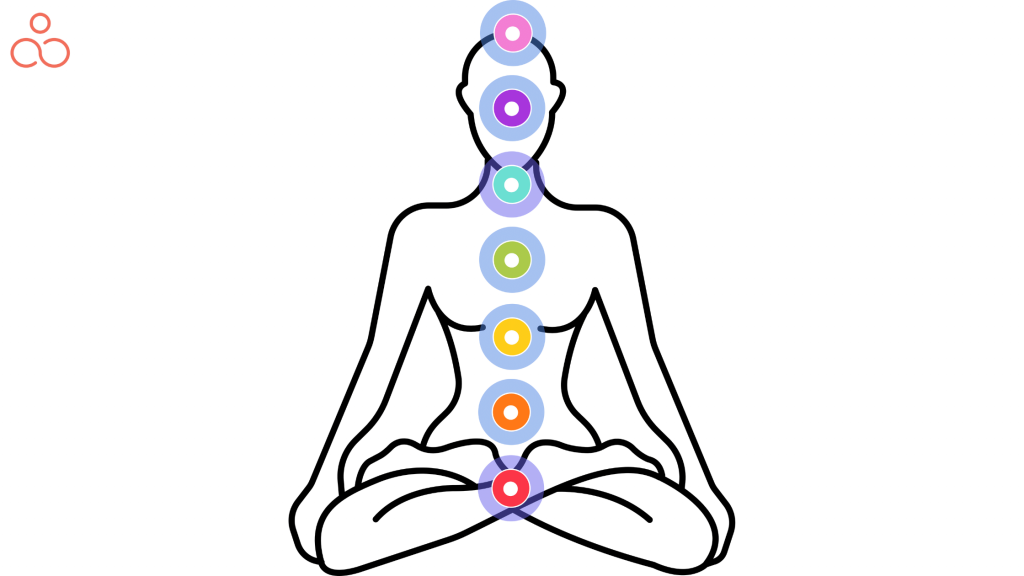
Chakras play a crucial role in managing our emotional, spiritual, physical, and mental well-being. What if you are unable to tap the right energy from these planes? You will be facing issues that you might have ignored as something small such as constant irritation, confused state of mind, difficulty in sleeping, or feeling helpless. Chakras could be blocked or even overactive displaying a dominance of their traits which could also cause trouble and imbalance. Learn how to unblock or balance your Chakras by adopting any of the below-mentioned techniques. Remember that problems don’t just disappear. It would help if you tried to understand the root and work on it.
- Yoga – The best way to unblock your Chakras is to opt for Yoga. Let the Yogic movements release all your blocks and regain your internal balance. You could practice Yoga every day to bring that energy back into your body and life.
- Meditation – Chakra meditation is popular among all the techniques and can be easily done at home without external support. It could be not easy when you initially start the process, but consistency will get you through the process. Work on your periods and improve gradually.
- Chanting – This technique involves healing through sound. Chanting a mantra such as “Om” or any word or phrase with a positive vibe is recommended to bring in the healing from within. Sound healing plays a vital role in bringing back the energies and balancing the Chakras.
- Tapping – Emotional Freedom Technique (EFT), commonly referred to as tapping, can be considered a technique to unblock your Chakras. This technique involves tapping using the fingertips on the body’s meridian points along the passage of energy flow.
- Aromatherapy – Essential oils work wonders, and quite a few people resort to using them in their daily life in various ways. You could burn these oils in your home or go for a massage to include these in your routine. The aromatherapy can be used to harmonize and balance your Chakras.
- Nature Trails – Mother nature is the best healer. Irrespective of how strong you are, life’s course is to put you through all kinds of situations. I personally feel that having a slow-paced walk in the park near your house could also do wonders for your stress. You tend to heal from within when you connect with nature. I find it very rejuvenating to stand on a beach barefoot with wet sand under my feet playing with the water. The healing power that we tend to absorb from nature is immeasurable, and you might feel refreshed and capable of things you might not have been ready for.
- Breathing Exercises – There are numerous breathing exercises that you can find on the net, but conscious breathing with awareness is the key to the technique here. Adopt any breathing exercise and put in a conscious effort to feel the breath you inhale having a positive effect on the Chakras and exhale to experience deep relaxation. Try to focus on your breath and keep all your other thoughts at bay.
- Diet – The food we eat reflects a lot on our behavior. Ayurveda strictly recommends consuming foods that suit your body type. Eating the wrong food, improper portions, or eating at the wrong time could imbalance your Chakras and block your energies. Pay attention to your food habits. Ensure that your plate is balanced and colorful (remember that Chakras are associated with colors).
- Crystals – Healing practitioners associate different stones with each Chakra and guide you accordingly in unblocking the energy. These stones are believed to hold in all the positive energy that is not tapped and help the body by unblocking and stabilizing the energies.
Yoga Poses that Awaken the Chakras
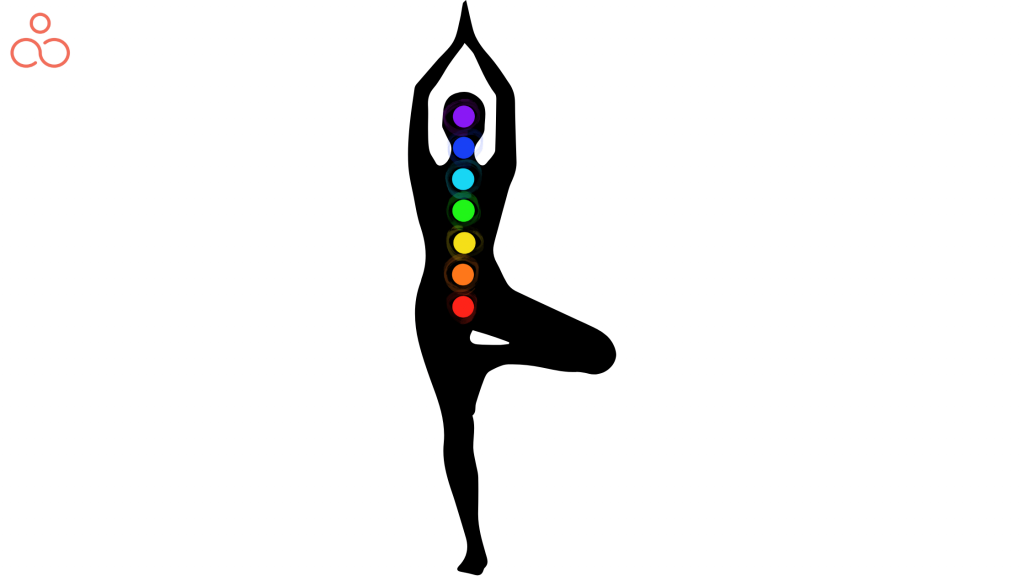
or centuries, Yoga has been working wonders in creating the right physical and emotional balance in practitioners. The Yogic poses help realign and unblock the Chakras while also improving the body strength and flexibility. Here, we have classified a couple of poses for each Chakra which might help you in regaining your balance.
First Chakra or Muladhara
- Virabhadrasana I or Warrior I – This is a standing forward-facing pose. You need to bend one knee and stretch the other leg backward. Raise your hands above your hand and join them with a fingertip pointing upwards. This pose works on your energy, focus, and strengthens the body.
- Balasana or Child’s Pose is a natural and foundational pose where you sit on your legs with knees folded under you. Bend forward and extend your arms forward to touch the ground. Try to place your forehead on the ground and support your chest on your thighs.
- Adho Mukha Svanasana or Downward Facing Dog is an inversion pose usually practiced in a yoga sequence. Stand and bend forward to form an inversion with your wrists and knees positioned under your shoulders and his, respectively. Hang your head, rotate your thighs inward, and sink your feet in the ground.
- Janu Sirsasana or Head-to-Knee Forward Bend is a seated pose where you stretch one leg out while keeping the other leg folded. Extend your hands and try to elongate your spine to hold the foot of the stretched leg. It creates a forward bend as well as a twist in the body.
Second Chakra or Svadhisthana
- Baddha Konasana or Bound Angle Pose is also called the butterfly pose by many practitioners. Sit with your legs folded and join the soles of your feet. Let your knees rest on the ground, and try to hold your feet with your hands. It is a good pose for meditation too.
- Malasana or Yogi Squat is a squatted position with your legs slightly wide apart and a straight spine. There are a lot of variations with the position of hands, but even a basic hand join in Anjali mudra is also fine.
- Utthita Parvakonasana or Extended Side Angle Pose is a standing asana where you must twist and shift horizontally. Stand with your feet shoulder-width apart. Raise your hands on your sides, stretch your right leg and bend the left one at the knee with your toes pointing outwards. Extend your right arm upward and reach your left foot with your left hand. Keep your gaze straight.
- Mandukasana or Frog Pose – This is a seated pose where you sit with your knees folded under you. Fold your hands, make fists with thumbs inside, and try to bend forward with your focus on the navel center. Place your fists on your tummy and hold the position. Do not touch the ground with your head.
Third Chakra or Manipura
- Navasana or Boat Pose is a seated asana where your entire balance lies on your tailbone. Sit with your legs stretched out, slightly lift your legs, and extend both your legs and feet outward. Hold in the position for a couple of minutes.
- Dhanurasana or Bow Pose is a core-crushing pose where you lie on your stomach and bend your legs backward at your knees. Extend your hands back, lift your torso above the ground, and hold your ankles.
- Purvottanasana or Reverse Plank – This pose targets the maximum number of muscle groups. Lie on your back and try to lift your body above the ground. Align your body in a straight lie by balancing your body weight on your hands (let your fingertips face inward).
Fourth Chakra or Anahata
- Ustrasana or Camel Pose is a back-bending pose where you kneel and bend backward to open your chest and hold your knees with your hands extended back. It works on your abdomen, chest, hip flexors, and shoulders.
- Matsyasana or Fish Pose is a reclining back-bending pose where you must lie down on your back and lift your chest off the ground. Position your hands alongside the torso and balance your body weight on your lower body and your hands.
- Vrikshasana or Tree Pose – This is a balancing standing pose where you bend one leg and position it on the thigh of your other leg. Raise your hands above the head and join your palms with fingers pointing upwards.
Fifth Chakra or Vishudha
- Bhujangasana or Cobra Pose – This is a reclining back-bending asana. Lie on your stomach, bring your hands in line with your shoulders, and bend your elbows. Push your weight against the ground with your palms and lift your torso up. Stretch your legs straight at the back.
- Chakrasana or Wheel Pose is a complete backbend that stretches your spine and opens your chest. Lie on your back and bend your knees hip-width apart. Position your hands alongside your head backward. Now bear the weight on your body on your feet and hands and lift your entire body to form a curve.
Sixth Chakra or Ajna
- Kapotasana or Pigeon Pose is a seated stretch where you stretch on your leg backward while your body is still facing forward. Fold one leg and bend forward to position your elbows straight on the ground. Tilt your head forward and gaze between your hands.
- Uttanasana or Forward Folds – This is a standing forward bend that elongates the spine and works on the hamstrings. Stand straight with your legs close to each other. Bend forward from your hips and try to hold your ankles or toes. Remember not to bend your knees during the pose.
Seventh Chakra or Sahasrara
- Padmasana or Lotus Pose is a seated pose with your legs crossed. Try to place your feet on opposite thighs with soles facing upwards. Position your hands on your knees and close your eyes to focus on a certain point.
- Savasana or Corpse Pose is a relaxing asana where your body will be refreshed and rejuvenated. Lie flat on your back and spread your legs and hands a little on the side to loosen up your body. Close your eyes and relax, don’t sleep.
Conclusion
Put in efforts to self-introspect and analyze how you are feeling to understand if your Chakras are in alignment or not. Usually, a blocked Chakra affects the body parts closest to it. Once you know what is not correct, you can easily find a solution. So at first, focus on finding the psychological and physiological problems, if any. You could use any of the techniques mentioned in the article to realign your Chakras and find a balance in your life. If you are still unsure where to start, feel free to reach out to an expert near you. It is necessary to consult your medical practitioner before starting with any form of physical exercise.

